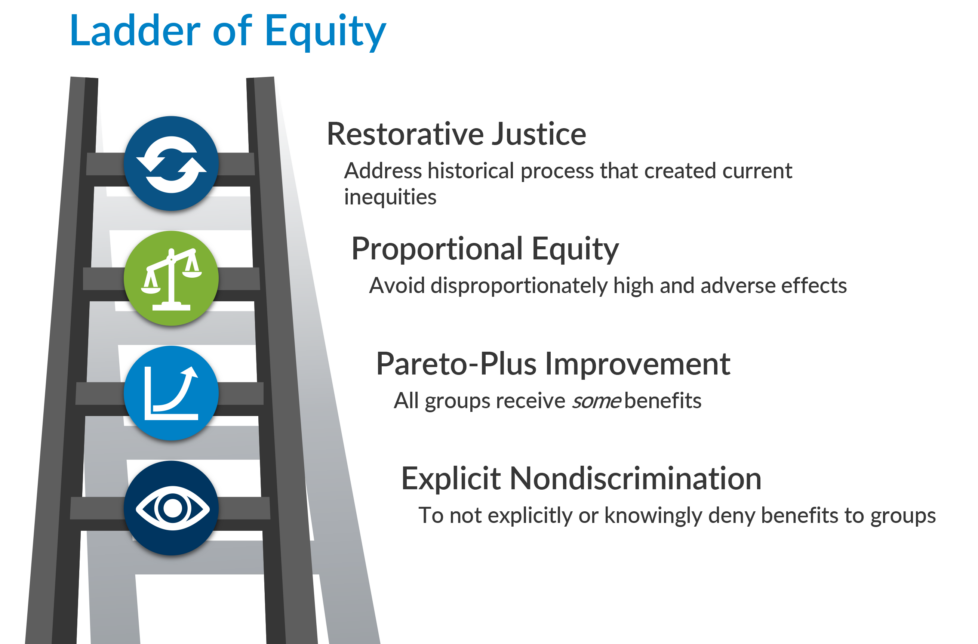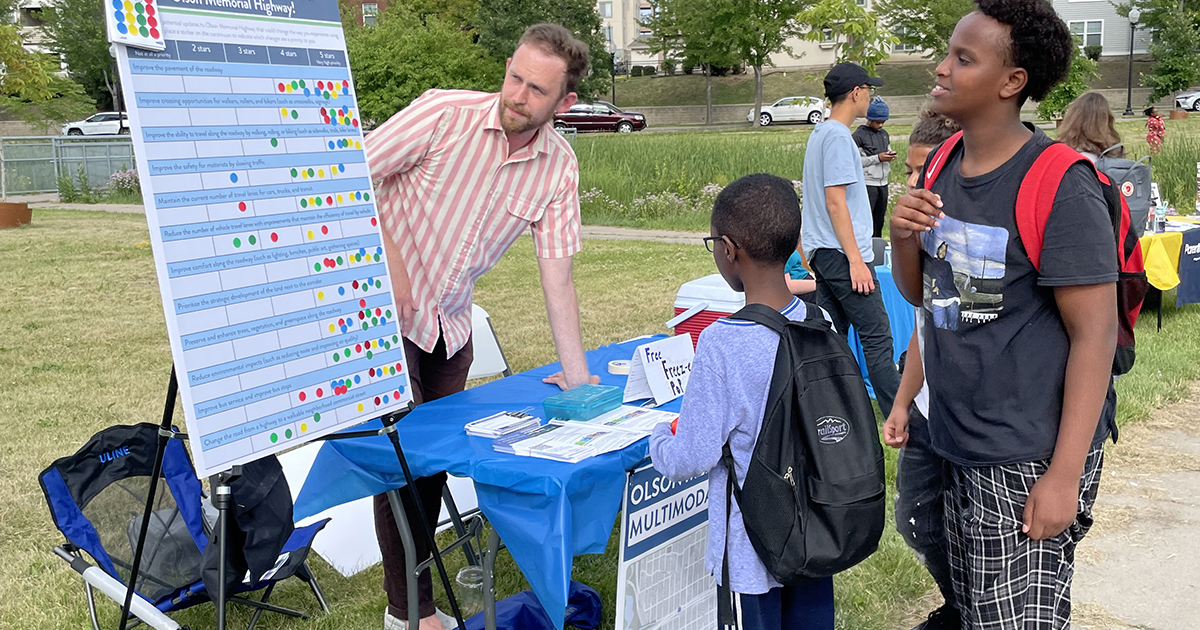According to Merriam-Webster, the term “equity” is defined as “justice according to natural law or right.” It seems like a simple and basic concept, right?
Sam Ricord, Ph.D., a transportation sustainability engineer in SRF’s Traffic Safety, Operations, Policy and System Studies Group, knows that equity is never simple, especially when it comes to transportation. With his extensive academic background, he provides a unique perspective by introducing innovative ideas about equity into the project planning approach to balance out the purely technical aspects of the process.
Sam is passionate about finding effective solutions to help communities resolve the complex challenges they face when addressing transportation shortfalls. For example, by thinking outside the box about funding strategies, state and local agencies can facilitate more equitable and just alternatives that make a noticeable positive impact on disadvantaged groups while making a negligible impact on traditionally privileged populations.
Supporting Sustainability Goals
As more and more agencies and communities set their sights on sustainability goals surrounding transportation, Sam argues that the role of equity and justice is imperative to the success of that goal:
The entire concept of sustainability is not just to fix our environmental issues. It’s to ensure that we keep our planet livable for generations to come. Obviously, we need the environment to remain intact for that to happen, which is why that is such a prominent part of sustainability. But we also need to ensure that our communities are able to continue to thrive and grow, and that is where equity becomes a piece of the puzzle.
Sam Ricord, Ph.D., Transportation Sustainability Engineer
SRF Traffic Safety, Operations, Policy and System Studies Group
Sam expanded on the role equity and justice in transportation in a recent article:
Operationalizing Equity and Justice
The concept of “equity” is a major focus point in the transportation world. The notion that transportation is integral to the daily life of all people is intertwined with the reality that the transportation options for certain groups can be considerably poorer than others. Equity is an inherently comparative phenomenon as it involves defining the “fairness” of the distribution of the costs, harms, and benefits of the transportation network amongst different individuals and groups of people, whatever fair might be.
Clearly defining what is fair in a transportation context is crucial to achieve equity in practice. There can also be many different levels of “fair.” An even distribution of benefits and harms, often called proportional equity, is one common definition of fairness and is often what people mean when they use the term equity. This definition, however, does not account for the historical disadvantage often faced by burdened communities.
Ladder of Equity

Martens, Karel, and Aaron Golub. 2021. “A Fair Distribution of Accessibility: Interpreting Civil Rights Regulations for Regional Transportation Plans.” Journal of Planning Education and Research 41 (4): 425–44. https://doi.org/10.1177/0739456X18791014
Justice incorporates this concept of historical disadvantage and takes the term “equity” one step further by not only providing an even distribution of benefits and harms but also providing the tools to remove historic barriers and harms caused by the transportation decision of the past. In this way, incorporating equity and justice into the transportation plans and projects of the future is as much an exercise in understanding history as it is looking into the future.
Because transportation is so intertwined with everyday life, every transportation project big and small has the potential to influence people’s lives and the historical context of transportation network development. Therefore, every project has some elements of equity and justice involved, regardless of size or scope.

The first step to operationalizing these concepts of equity and justice in transportation practice is to actively assess what the past and future impacts of elements of the transportation network are. This framework can apply to all levels of transportation, from the highest-level decision-making to small scale projects. Acknowledging these issues, both current and historical, is critical to eventually being able to address these equity and justice concerns. Beyond simple acknowledgement, there are two key areas that are needed to assess and address equity and justice concerns: defining who is impacted and defining what is a “fair” outcome for those groups in the distribution of benefits and harms.
Achieving Equity in the Planning Process
To achieve equity in the context of transportation, it is vitally important to understand all the impacted groups and communities with regard to the specific transportation context in question. Lack of representation in the decision-making process on any level can lead to negative equity outcomes by not incorporating their voices, opinions, and needs. Historically disadvantaged communities, such as BIPOC communities and communities of color, should be given extra attention in this context due to the significantly higher levels of historic burden faced by them. Then, the benefits and harms faced by these communities must be identified to define what a “fair” distribution of these benefits and harms is.
This process MUST be done in conjunction with the identified communities as only they can truly identify their needs and thus the potential benefits and harms of a transportation project. This can be done analytically, through outreach, and/or by many other methods. This definition of fairness should be reevaluated throughout the entire process of a project from start to end to ensure the benefits and harms are distributed fairly according to the agreed upon definition.
Ultimately, as transportation professionals, we are on the front lines of the interface between humans and the transportation network and it is our duty to ensure the benefits and harms associated with transportation projects are equitable and just in all the work that we do.
How can SRF help?
SRF’s team of transportation professionals, traffic engineers, and data scientists will work with your agency to develop context-sensitive, environmentally conscious, and economically responsible solutions. With a focus on sustainability and resilience as integral elements of our services, we help our clients improve traffic safety, reduce air pollution, and provide multimodal access for all. We are dedicated to helping communities realize safe, equitable, and sustainable transportation solutions.

608.298.5417
Sam Ricord has five years of experience in building sustainable and equitable transportation systems in the United States. With an education in civil and traffic engineering, his work has focused on the confluence of transportation equity, technology, sustainability, and safety. Prior to his current role, Sam completed his doctoral degree from the University of Washington. During his studies he covered a wide variety of transportation-related topics, including investigating the intersection of transportation equity and technology, creating quantifiable methods for assessing equity, and addressing critical equity and safety topics in tribal communities.
Sam currently supports efforts at SRF to help our client agencies advance their sustainability and resilience goals, including the Minnesota Carbon Reduction Plan, Resilience Improvement Plan and implementing the vehicle miles traveled (VMT) reduction target.

